Do you need it?
Small dressing rooms are comparable in functionality to solid ones wardrobes: what to choose from this? When answering this question, one should take into account the ergonomics of the dressing room. It should be convenient for a person to move inside, respectively, the minimum width of such a space is 150 cm (~ 60 cm will be occupied by shelves, clothes on hangers). Accordingly, if the choice is between a narrow dressing room and a wardrobe, choose the latter.
One of the ideas for a small, cozy dressing room is a deep wardrobe, in English called reach in closet system. It is usually located in a niche, has a large capacity and ease of use.
If there is enough width for movement, you can equip a full-fledged small dressing room.
Its advantages:
- Saving space... Oddly enough, to equip one large storage system in an apartment requires less space than several small ones.
- Save time... If you organize all your clothes in one corner, your morning preparations will go faster.
- Saving energy... Compactly organized items are easier and faster to put into place.
To make the dressing room as ergonomic and comfortable as possible, follow designer tips:
- Use full height... In every house there are things that you get 1-2 times a year. The very place for them is under the ceiling.
- Don't add extra shelves... The lower one, for example, is useless - put shoes or boxes directly on the floor.
- Plan your content ahead of time... To do this, you need to know exactly what and in what quantity you want to store.
- Make a sliding door... Or curtain... Or abandon it altogether in order to save space.
- Order an individual project... Only custom-made furniture takes into account all the nuances of the room and allows you to use every valuable centimeter of space.
What is the best dressing layout?
It is impossible to say unequivocally which design of a small dressing room will suit everyone. Depends on the area and dimensions of the allocated room, the number of things in storage.
A small dressing room can be organized in five ways - choose the one that suits you best.
Linear
It is usually used in niches, looks like a wardrobe or reach in closet system, is separated from the room by curtains, sliding doors. In some cases, even a small stylish dressing room without doors looks good - for example, if it is located behind the bed and a partition separates it from the bedroom. Shelves along one wall are also often mounted in long, elongated spaces.
Corner
The L-shaped plan is suitable for both elongated and square rooms. The dressing room is considered more spacious, because 2 walls are occupied at once.
U-shaped
If for the first two a width of 150 cm is sufficient, then in this case the room should be at least 200-210 cm wide and at least 150 cm long.The many cabinets complicate the selection of the filling - after all, you need to think over so that nothing intersects.
Parallel
The arrangement of two rows opposite is possible only in dressing rooms of at least 2 meters. It is appropriate to decorate the far wall with a mirror or fix an ironing board.
Circular
Shelves, rods and drawers are installed around the entire perimeter, including the space above the door. Suitable for dressing rooms of at least 4 square meters (2 * 2).
Where is the best location?
Arrangement of a small dressing room begins with choosing a place. If the apartment already has an empty pantry - the easiest way to use it. The pantry is usually located in a convenient area, already separated by a door, and has supplied lighting. In other cases, you will have to use a living space for a dressing room.
The most commonly used option is with zoning. bedrooms... The design of the room is initially designed taking into account the location of the small dressing room. It is placed behind the bed or at the entrance, depending on the layout of the room. The bedroom will become smaller, but you will be able to store all clothes, shoes and other necessary items in a place hidden from prying eyes.
The advantage of a dressing room in the bedroom is an intimate setting in which you can calmly change clothes.
The second most popular example of the placement of dressing rooms is hallway or corridor... Usually there is not much furniture here and enough space to accommodate cabinets. In a spacious corridor with a square or square shape, using partitions or compartment doors, a niche is separated and shelves are placed in it. The narrow elongated one is only suitable for a large cabinet.
How to organize internal content?
A small dressing room should be thought out to the smallest detail: you have to not only choose the right elements, but also correctly position them relative to each other. Drawers should open, clothes on hangers can be easily removed and returned.
You should start with the rods: the free space under them depends on the things that are stored on the hangers. Dresses, long coats - 150-160 cm, shirts - 90-100 cm, trousers - 65-75 cm.
For convenience, the rods are made one above the other, while a pantograph is used for the upper one, which allows it to be lowered to a convenient level when you need to hang clothes or take them out, and raise them back at the end of the process.
An obligatory attribute of the dressing room, even in the mini version, is drawers. Inside it is convenient to store underwear and other clothes that do not require storage on a hanger.
There are never many additional shelves: shoes, boxes with necessary things, accessories are stacked on top.
When arranging the storage to the ceiling, be sure to think over exactly how you will get and put in place items from the top three shelves. It is logical to place here a small stepladder to facilitate the task.
Don't forget the basic element of usability: light. Lucky if there is a window in the dressing room. But more often confined spaces are reserved for storage, therefore lighting is mandatory here even in the daytime... High-quality illumination will be provided by several built-in spots or directional lamps on the bus.
Useful Ideas for Convenient Storage
The organization of a small dressing room is no different from a large one. To use it conveniently and the device was intuitive, think over compartments for each type of clothing and accessories: trousers, shirts, underwear and socks, belts, bags, watches.
Under shoes the lower shelves are assigned. It is convenient to put non-seasonal items in boxes and put them at the very top.
If your closet has more clothes stored on the shelves, make more drawers and upgrade to a vertical storage system.Things are folded into compact rectangles and placed on the "end" in rows.
This folding saves space and keeps things tidy. You can be sure that one thing will not pull several others along with it (as is often the case when storing in piles).
The last nuance - layout logic. The most used things are stored at eye and hand level, the upper shelves under the ceiling are set aside for seasonal or rarely needed things. At the very bottom are items that are not needed every day, but should remain available.
We hope, among the photos of small dressing rooms in the article, everyone will find the perfect option for themselves!


 10 practical tips for arranging a small kitchen in the country
10 practical tips for arranging a small kitchen in the country
 12 simple ideas for a small garden that will make it visually spacious
12 simple ideas for a small garden that will make it visually spacious
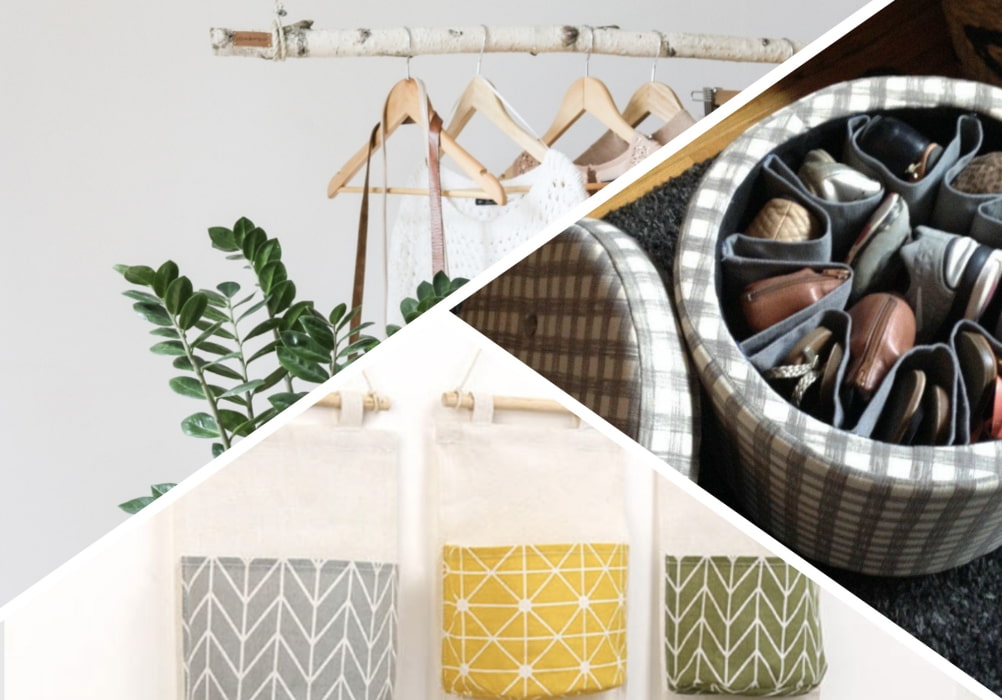
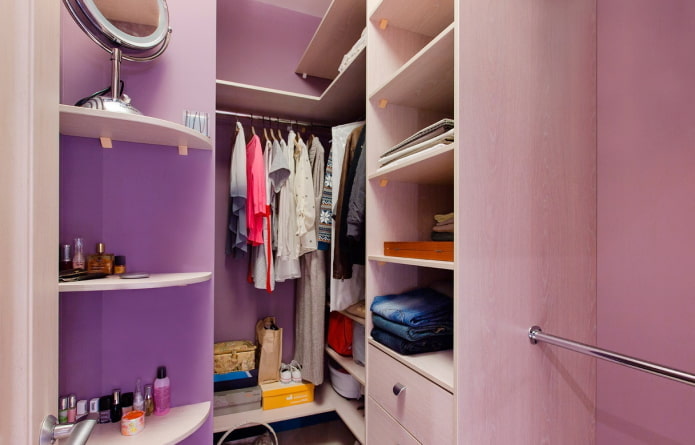
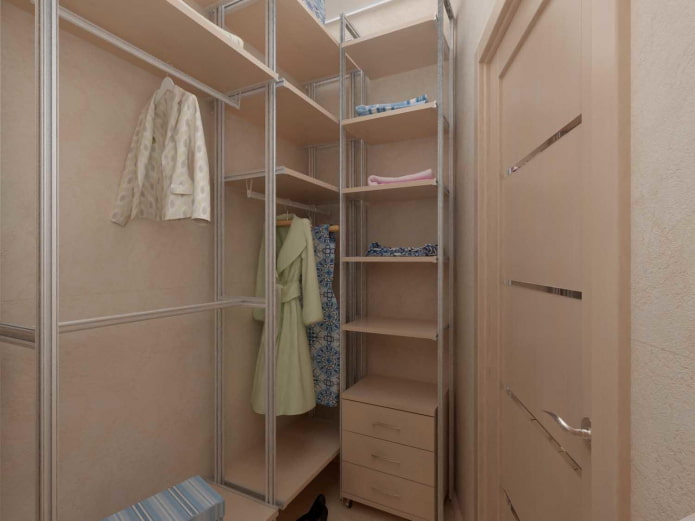
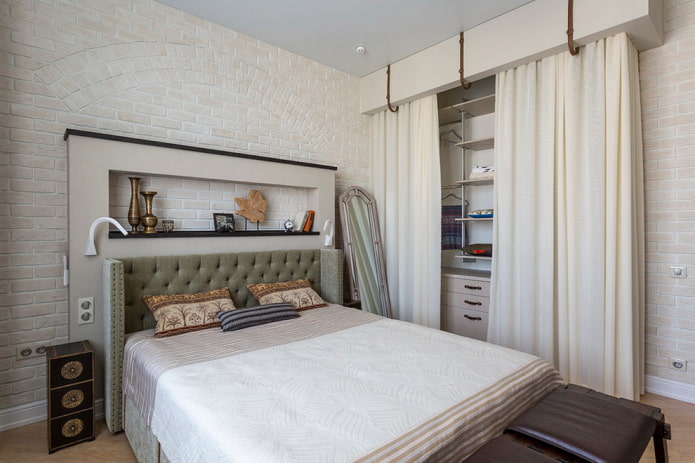
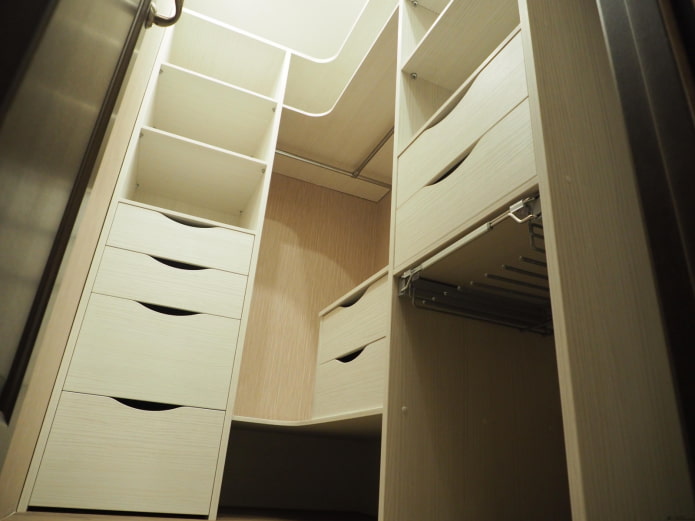


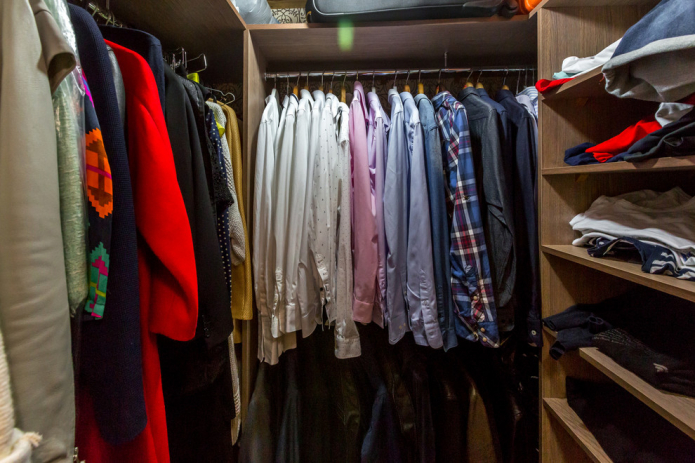
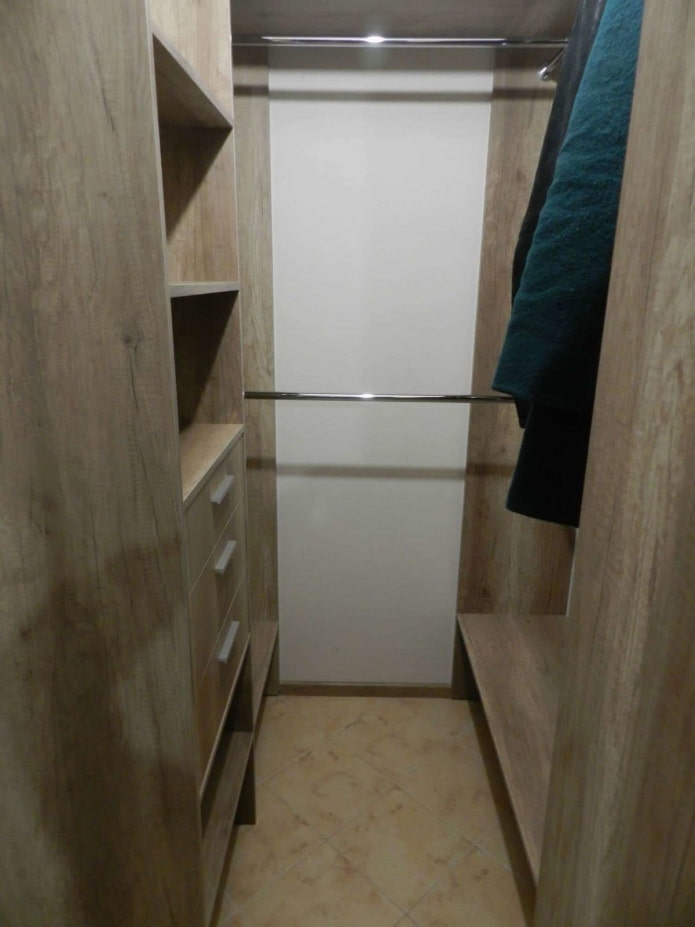
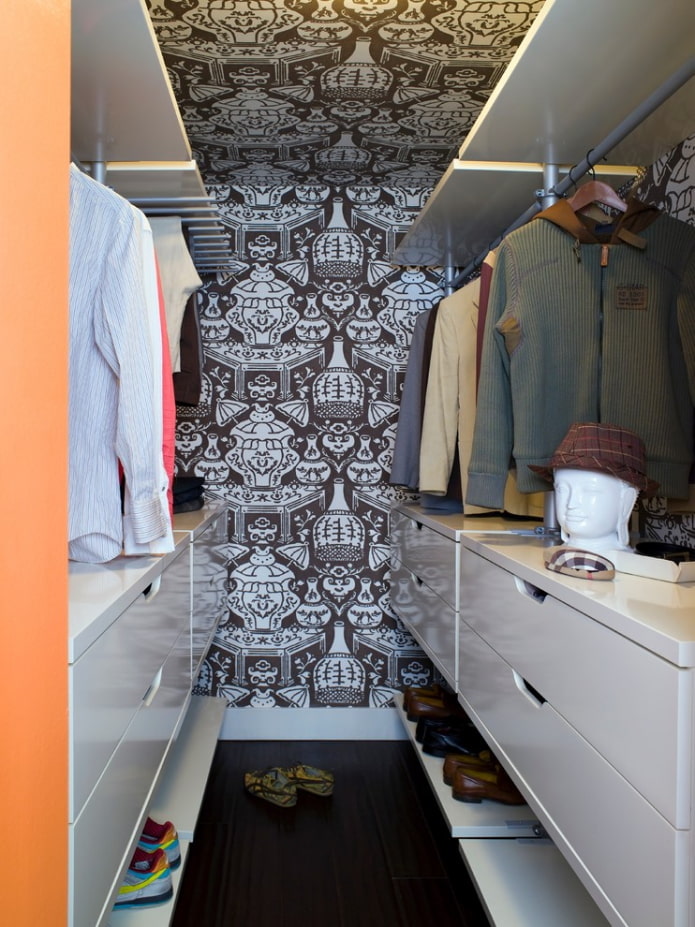
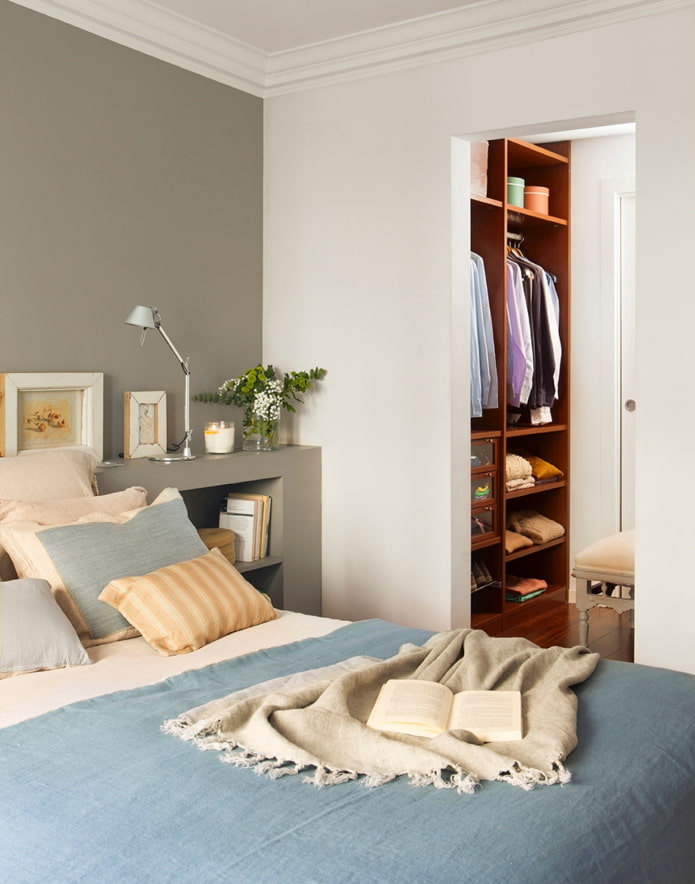
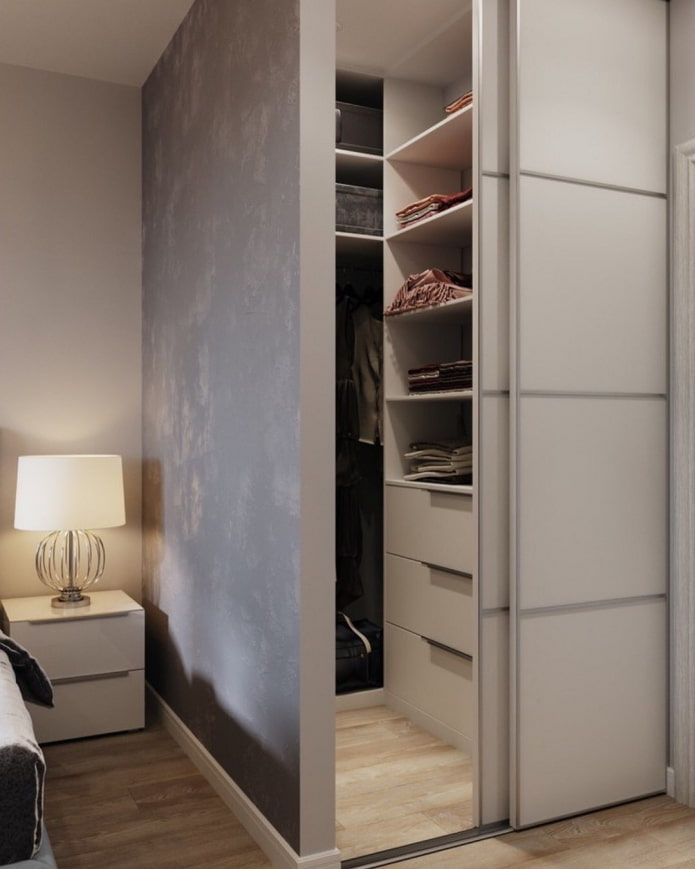
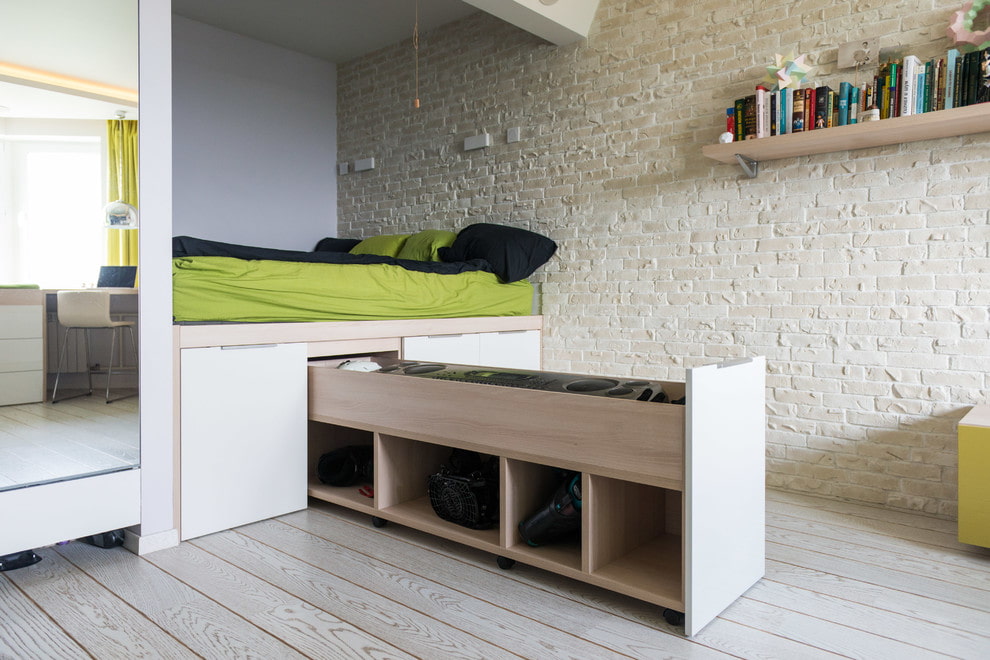

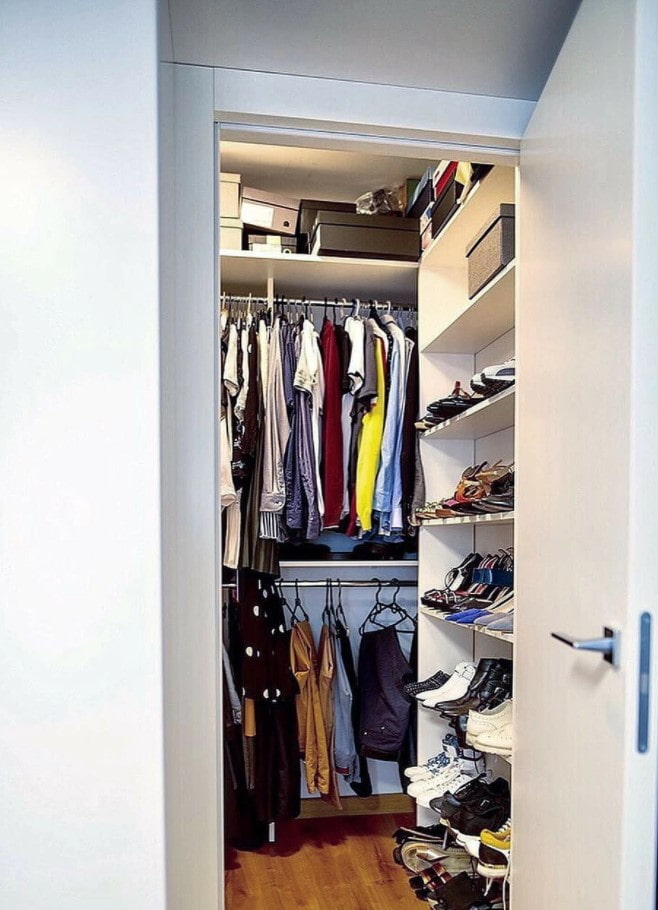
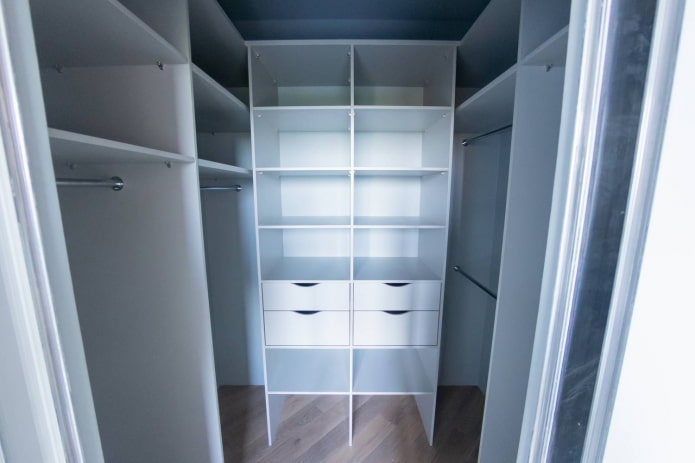
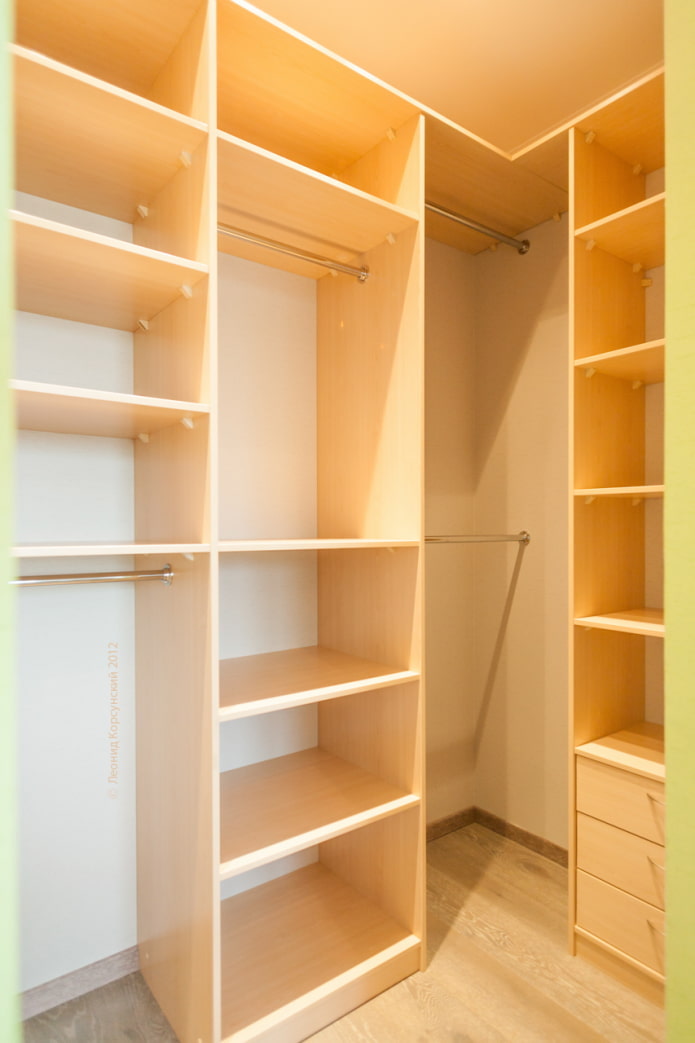
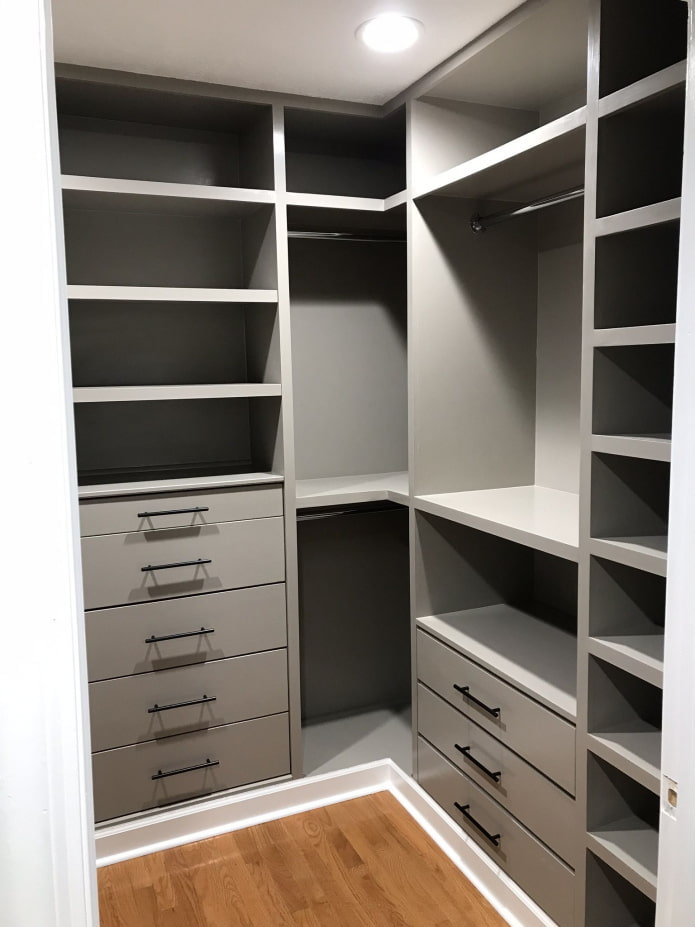
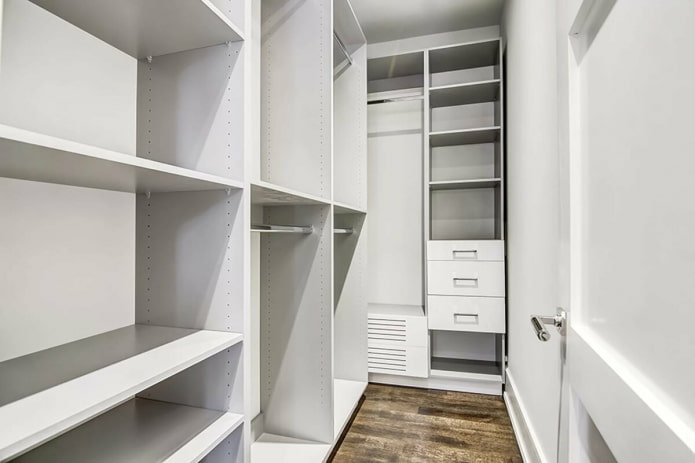

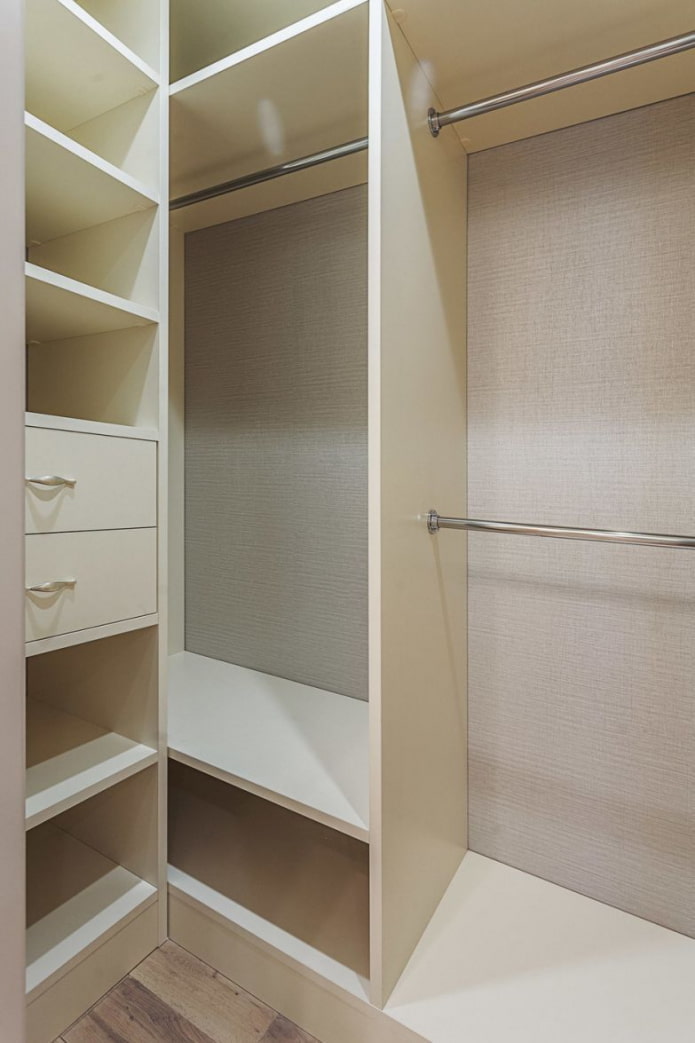
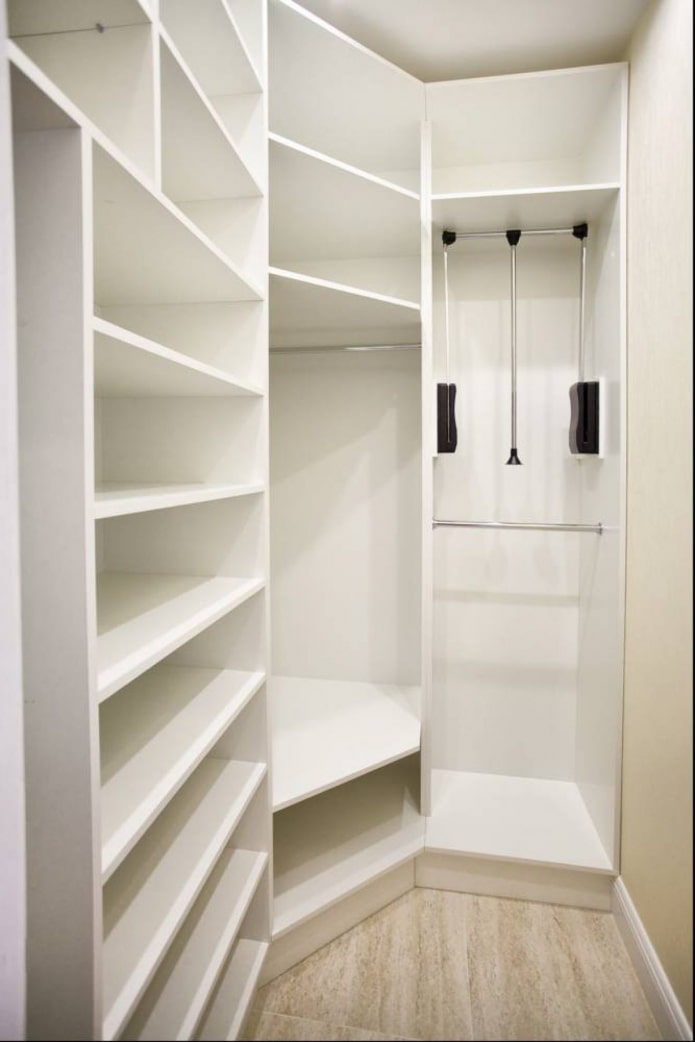
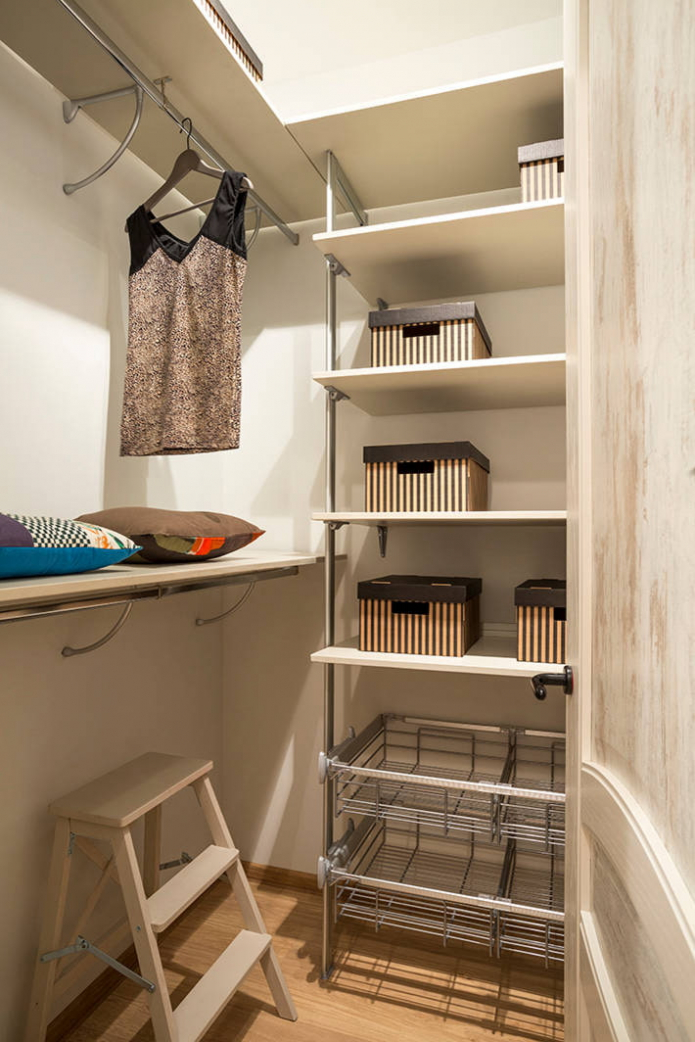
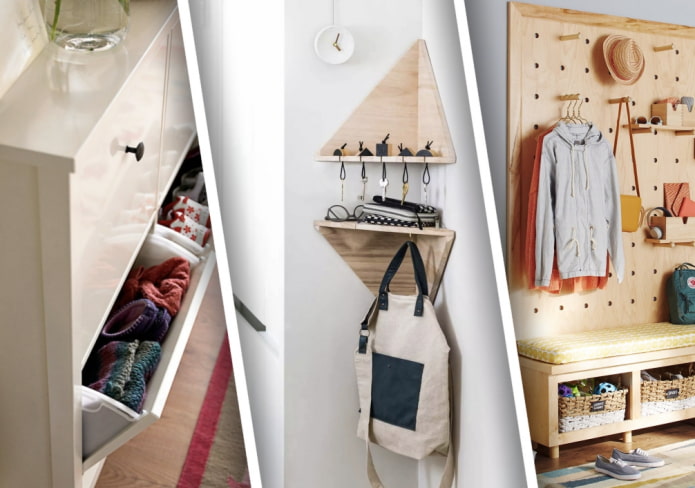
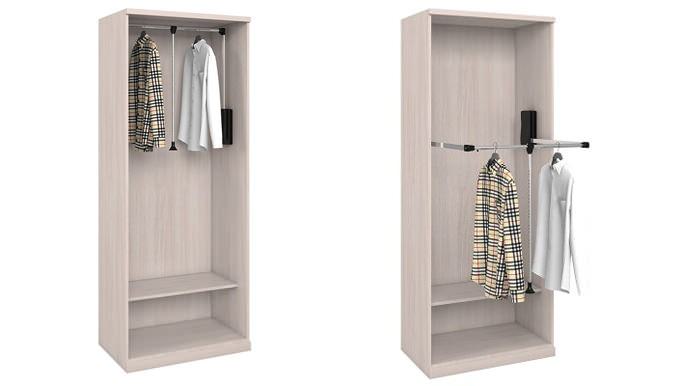
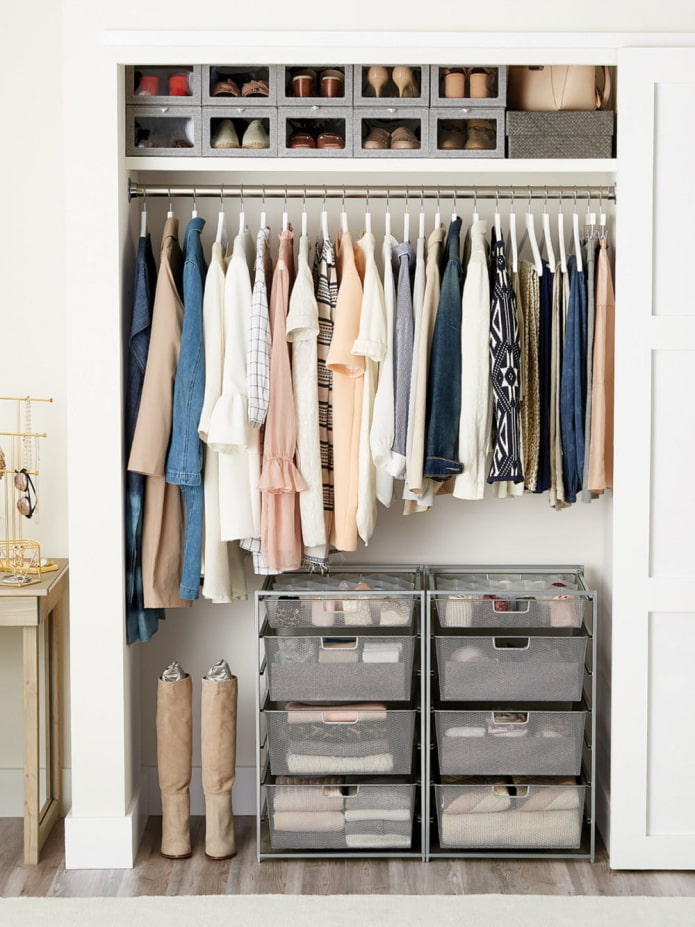
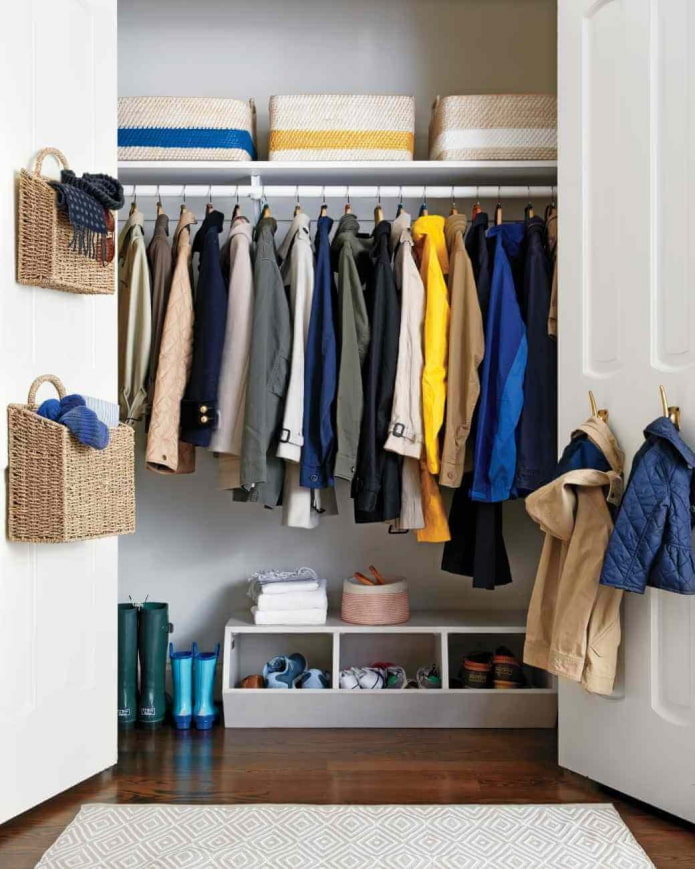
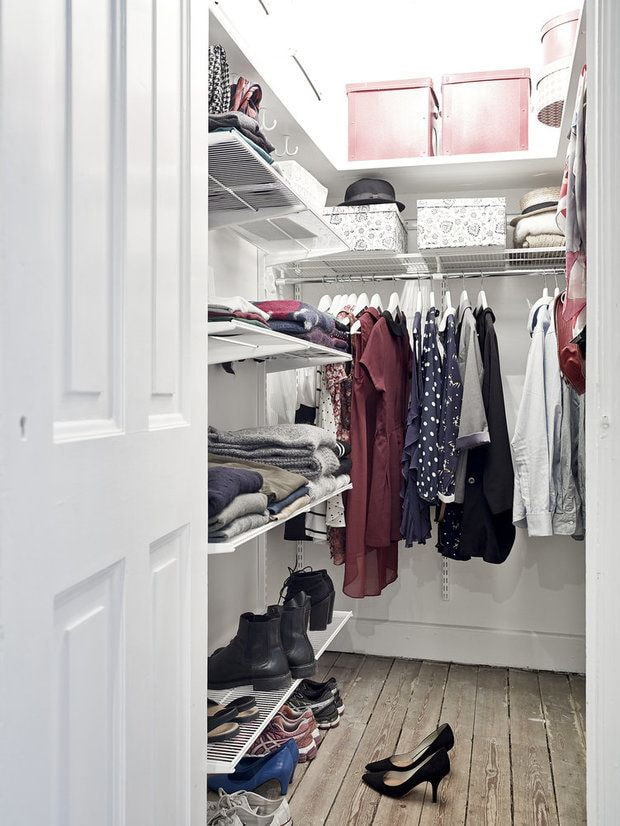
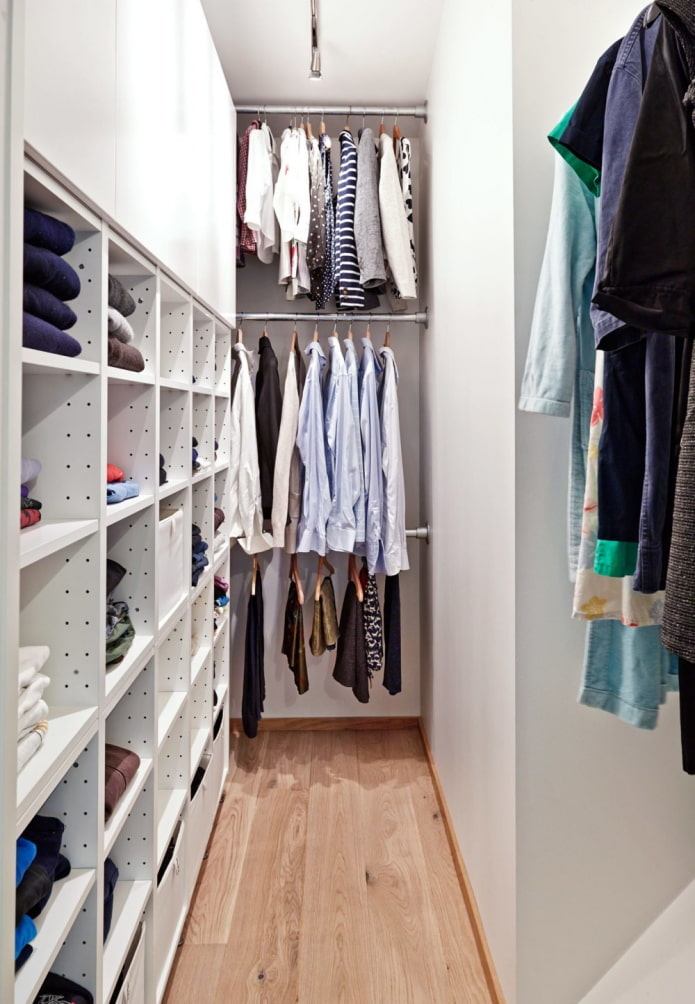
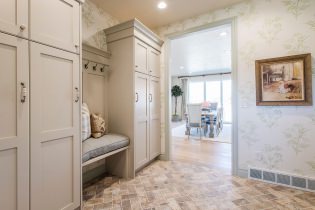 How to choose wallpaper for a small hallway: 70 design ideas
How to choose wallpaper for a small hallway: 70 design ideas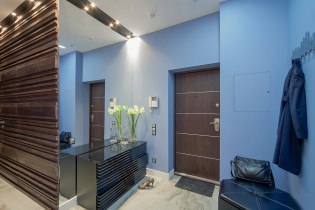 How beautiful to make a hallway in an apartment: design ideas, layout and arrangement
How beautiful to make a hallway in an apartment: design ideas, layout and arrangement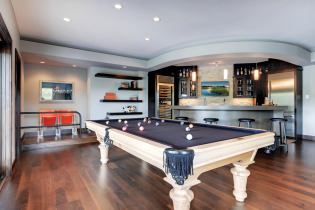 Billiard room interior in the house: design rules, photo
Billiard room interior in the house: design rules, photo Hallway design in white
Hallway design in white The most beautiful swimming pools in the world
The most beautiful swimming pools in the world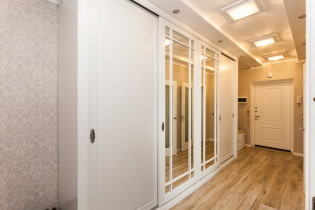 How to choose a wardrobe in the hallway?
How to choose a wardrobe in the hallway?